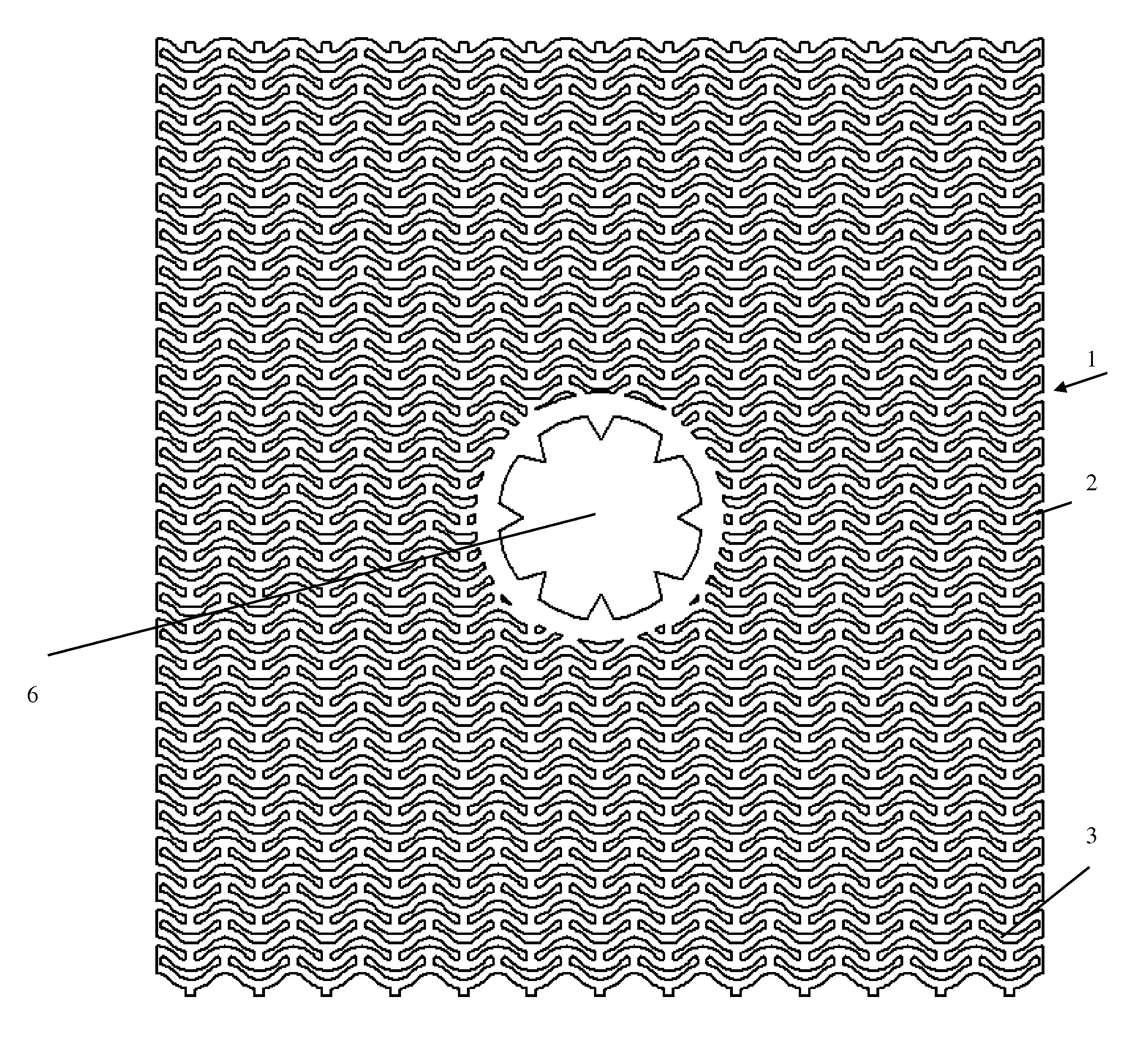3D ductile and perforated retaining sheet
a technology of ductile and perforated retaining sheets and retaining sheets, applied in the field of sheets, can solve the problem of inability to be shaped in three dimensions without losing other important properties
- Summary
- Abstract
- Description
- Claims
- Application Information
AI Technical Summary
Benefits of technology
Problems solved by technology
Method used
Image
Examples
Embodiment Construction
[0024]As mentioned above, the material of the sheet shall be plastic deformable and non-toxic. According to one specific embodiment of the present invention, the plastic deformable and non-toxic material is chosen from the group consisting of stainless steel or an alloy thereof, aluminium or an alloy thereof, niobium or an alloy thereof, zirconium or an alloy thereof, tantalum or an alloy thereof, or titanium or an alloy thereof. The plastic deformable and non-toxic material may also be chosen from a biocompatible polymeric material. Examples of such are PEEK (polyether ether ketone), PC (polycarbonate), polyethylene, polypropene and polyurethane. Other possible examples are biocompatible and biodegradable polymeric materials, such as polylactic acid or polyglycolic acid materials.
[0025]Metals and metal alloys are suitable for medical applications in view of the fact that these materials, in particular titanium and titanium alloys, are used in implants, especially in dental implants...
PUM
 Login to View More
Login to View More Abstract
Description
Claims
Application Information
 Login to View More
Login to View More - R&D
- Intellectual Property
- Life Sciences
- Materials
- Tech Scout
- Unparalleled Data Quality
- Higher Quality Content
- 60% Fewer Hallucinations
Browse by: Latest US Patents, China's latest patents, Technical Efficacy Thesaurus, Application Domain, Technology Topic, Popular Technical Reports.
© 2025 PatSnap. All rights reserved.Legal|Privacy policy|Modern Slavery Act Transparency Statement|Sitemap|About US| Contact US: help@patsnap.com



